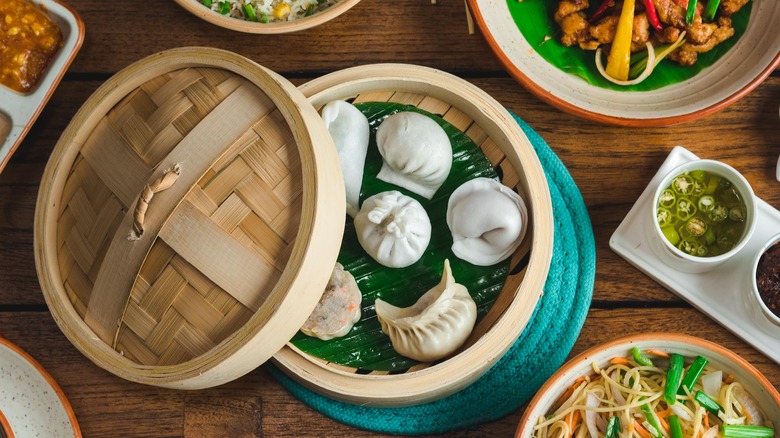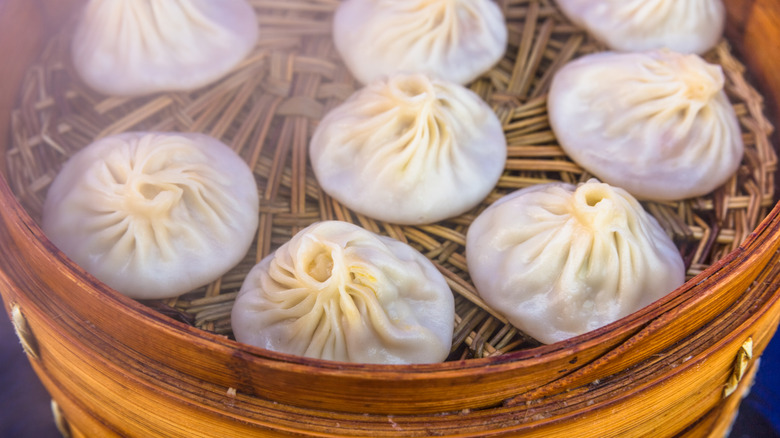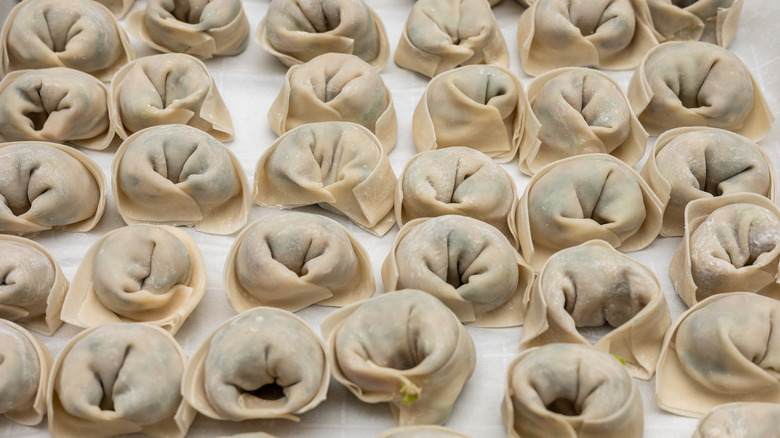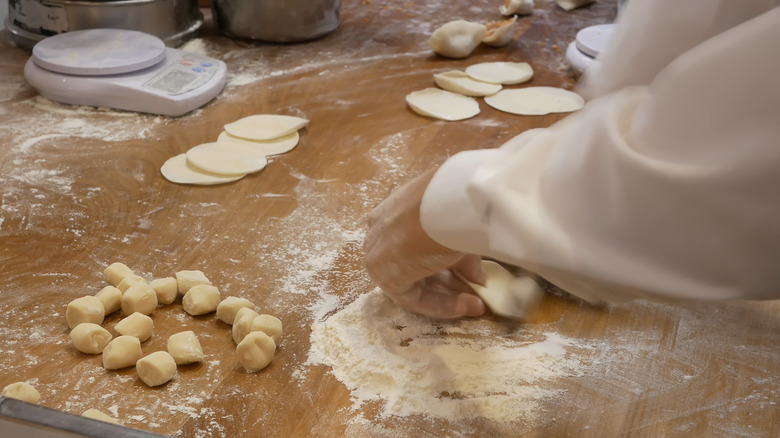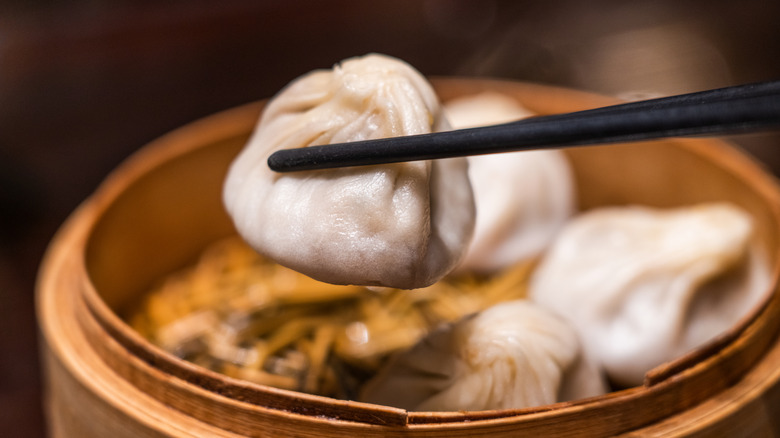What Separates Soup Dumplings From Wontons?
When you first see the words "soup dumplings" on the menu, it wouldn't be unusual if an image of wontons popped into your mind. After all, wontons are dumplings served in soup and, like soup dumplings, are made with a flour wrapper surrounding a filling consisting of some type of minced meat. But with soup dumplings, the soup is actually inside the dumpling, ready to burst out with one small bite.
You're likely to find one or both of these items as you navigate the menu at a dim sum meal. Both have long traditions in Chinese cooking, have been eaten in a variety of ways throughout their histories, and are now staples on menus at Chinese restaurants around the world. But while wontons are now eaten with everything from tea in the morning to late-night snacks, the most common soup dumplings (xiao long bao), have strict rules about how they are made and how they are eaten.
What is a soup dumpling?
Soup dumplings are made by filling a dumpling skin, rolled to be slightly thicker in the middle than on the edges, with a meat mixture and then layering it with gelatin or an aspic-like spread made from the broth that has been allowed to congeal. Once steamed in a bamboo basket, the gelatin melts and you end up with a dumpling that bursts with an explosion of warm soup once you bite into it.
The origins of soup dumplings are somewhat murky. Many will say they were created in Nanking, now a suburb of Shanghai, in the 19th century by a chef with a competitive spirit seeking to distinguish his dumplings from that of other chefs. These are known as "xiao long bao" ("little basket buns"). Other stories say soup dumplings' history goes back even further, having evolved from guantang bao — larger, fist-sized dumplings that originated in Kaifeng, Henan Province during the Northern Song Dynasty (A.D. 960-1,127). Although in many parts of China today, soup dumplings are simply called "tang bao" and are made in various sizes and with different meats and broths, xiao long bao are the most popular and are eaten around the world.
What is a wonton?
Wontons are dumplings made with a thin flour wrapper that is stuffed with minced meat (both soup dumplings and wontons are likely to use pork), shrimp, or vegetables and then either boiled or fried. When cooked, the skin becomes translucent and you can see the generous amount of filling inside. Most often they are served in a simple chicken broth topped with scallions, bok choy, or both.
Wontons also have a long history — likely longer than soup dumplings' history— having been created in the northern part of China more than 1,000 years ago. The name comes from the Cantonese word for "'swallowing a cloud." Wontons, particularly Sichuan wontons, are also known as "chāo shǒu," which means "crossed hands" in reference to the way the dumplings are wrapped.
There's a set of standards for soup dumplings
Xiao long bao are now made to a set of standards adopted by China's National Intangible Cultural Heritage in 2014. According to those standards, wrappers need to be 1.5 millimeters thick and weigh 8 grams (although many are still made weighing 5 grams). The filling should weigh 16 grams and the wrapping should be closed with 18 folds at the top. When steamed, the bao should be 2.5 centimeters in diameter.
Wontons, on the other hand, are prepared and served differently across the country. In Sichuan province, wontons are filled with pork and are served in red chili soup. In Guangzhou, which is on the coast, wontons are stuffed with shrimp and served in clear fish soup. Cantonese wontons are stir-fried and served in a soup with additional noodles. Thinly wrapped bubble wontons that burst in the mouth are served in Jiangsu province with morning tea. In Qingdao, Shandong province, wontons are served as a late-night snack.
There's a right way to eat soup dumplings
Soup dumplings should also be eaten a certain way. You'll find out the wrong way — holding it with chopsticks and taking a big bite into it — pretty quickly since you're likely to end up with a burnt mouth and soup dribbling down your chin. The best method — and there have even been videos made to show you how — is to either hold it with the chopsticks or place it on a Chinese flat-bottomed spoon, nibble a small hole, and allow the broth to drip out into the spoon. You can then either sip the broth first or take a bite of the wrapper while sipping. Since stabbing the dumpling with a fork will likely allow all of the soup to spill out, you should know how to handle chopsticks deftly.
Those chopstick skills will also come in handy with wontons. Besides being eaten in soup, wontons can be fried, steamed, and served with a variety of dipping sauces. If you want to combine the two foods into one dish, you can try this hack with Trader Joe's chicken soup dumplings: Pour chicken broth over the dumplings, and add ingredients like miso, soy, or scallions. You'll enjoy having soup dumplings in your soup.
